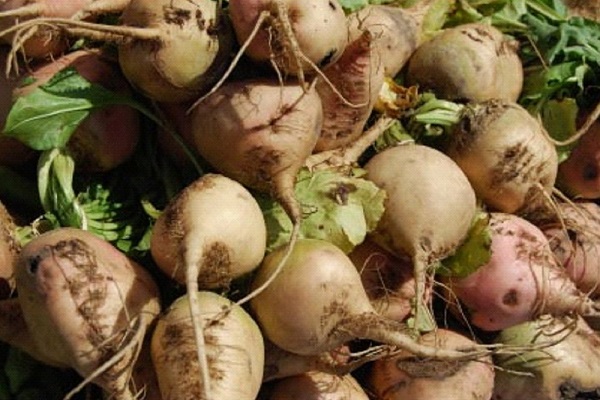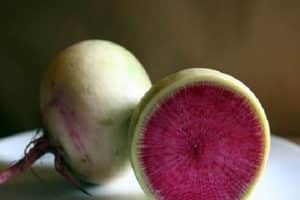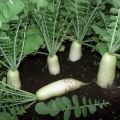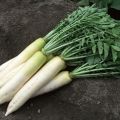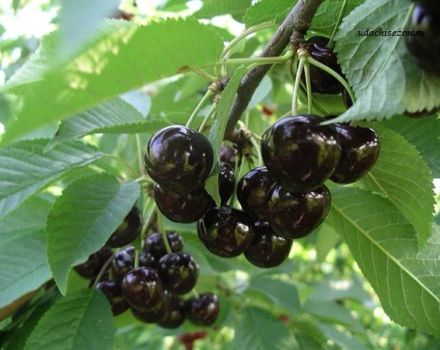How and when to plant, grow and care for radish outdoors
The widespread cultivation of such an ancient culture as radish is justified by its positive characteristics and benefits. Decaying root vegetables enrich the human body with vitamins, stimulate digestive processes, and help heal the gallbladder and liver. Many dishes can be prepared from radish, and it is easy to harvest this vegetable on any soil, under a film, spunbond or in the open field.
Types and varieties
The main types of radish:
- Japanese - daikon. It has the softest and most delicate taste.
- Chinese - lobo. The taste is soft with bitterness.
- European. Has a rich, bitter taste.
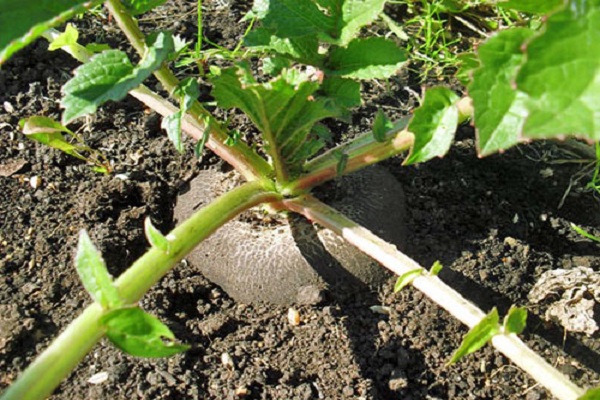
Popular radish varieties:
- Winter long black. Elongated black roots with white, juicy, crunchy pulp. They retain useful characteristics for a long period.
- Round black. Mid-season, with high taste and medicinal properties. White juicy pulp with a bright, pungent taste.
- Winter white. The flesh is dense, medium spicy. It retains its presentation for a long time.
- Margelanskaya. Green fruits with a greenish white flesh with a slightly pungent taste. Lying grade.
- Maiskaya. Early, the pulp is not prone to darkening, tender, semi-sharp.
- Delicacy. Early maturing, with an elongated, oval root vegetable with a slightly sharp flesh.
- Odessa. Summer. The fruit is smooth, flat-round, white with a green head. Semi-sharp taste. Prone to cracking.
- Okay. An early ripe variety that forms a conical root crop of red color. The delicate white pulp near the rind is colored pink.
- Sultan. Medium early. Long, white, conical fruit with white tender flesh.
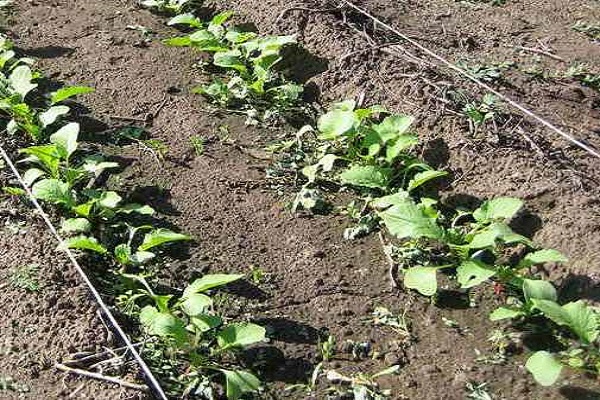
Seed preparation
High-quality specimens are selected from the seed material, which are recommended to be disinfected in a manganese solution. After half an hour, the seeds are washed with water and laid out on a damp cloth. Sowing is carried out when the seeds swell and begin to hatch.
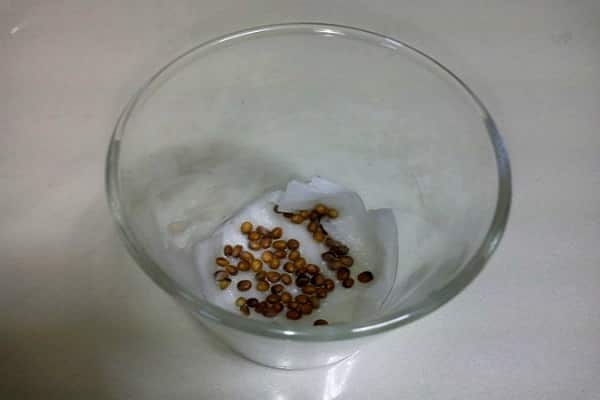
When can you plant a radish
The yield of this vegetable crop largely depends on compliance with the sowing dates. It is important to first decide why you decided to plant the radish - for spring-summer use or for bookmarking for long-term storage. A prerequisite is a short daylight hours, which protects plants from shooting, ejection of peduncles, as a result of which the fruits become unsuitable for food.
You need to sow different varieties at different times. Summer: from 10 to 25 April, winter: from 15 June to 10 July. Early varieties, producing small roots with juicy, slightly sharp pulp, are sown in March. Such radish reaches technical maturity in 45 days.Summer varieties ripen in 60 days, they are usually sown in late April - early May. Resistant to temperature drop. Mid-season winter varieties grown for long-term storage are ready on day 100. Timely harvest is possible when radish is planted from late June to the first decade of July.

Soil preparation
The agrotechnics of growing radish allows sowing on any soil. Especially juicy root crops, with a dense pulp, should be expected on sandy loam and loamy soils. Cultivation in light, sandy areas will require increased watering.
Soil preparation begins in autumn: the ridges need to be dug quite deeply, with the introduction of compost or humus at the rate of 6-8 kg per square meter of planting. In the spring, a mixture of urea and potassium chloride, taken in 20 g and 30 g of superphosphate per square meter, is used as fertilizer.
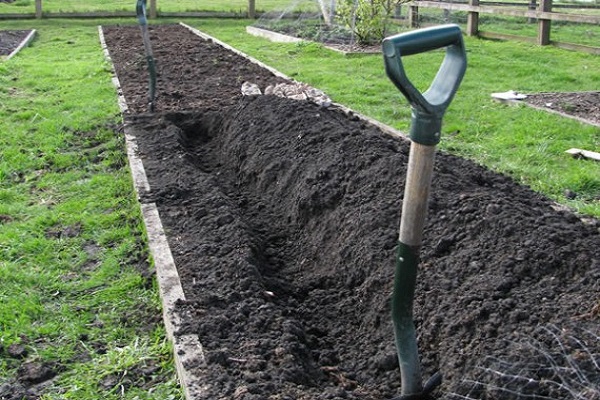
Landing
In the open field, the radish is grown with seeds, distributed in rows 1–2 cm deep, at a distance of 4–5 cm. This method involves thinning. Seeds that have swollen or hatched can be planted at intervals of 15 cm. When sowing an early radish, the step between the grooves is maintained at 15-20 cm. Late-ripening varieties can be grown on grooves with a distance of 25-30 cm.
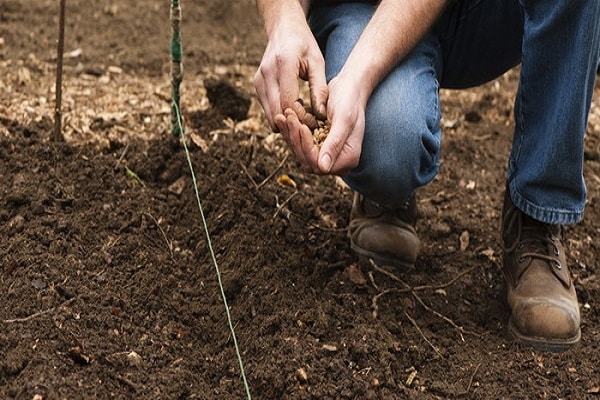
Radish care rules
Thinning
Thinning is a mandatory procedure, because the thickening of crops increases the risk of peduncles, deformation and coarsening of fruits. First, thinning is carried out after the formation of a pair of true leaves. Plants can be removed completely or pinched, leaving a distance of 8-10 cm. Then, the radish is thinned in the phase of formation of 4-5 leaves at a distance of 12-15 cm, for winter varieties - 20 cm.
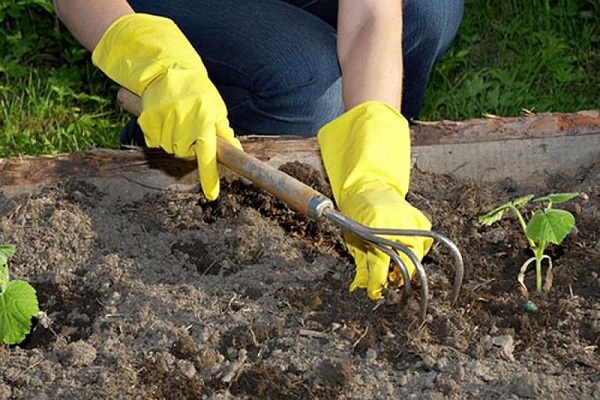
Watering
Regular watering relieves the fruit of flabbiness, excessive bitterness and the appearance of voids. One square meter of radish crops requires 10-15 liters of water. The need for moisture increases with the formation and filling of fruits. In case of overflow, the roots become watery. When cultivating radish, the soil moisture should be maintained within 75–80%.

Top dressing
During the growing season, the radish needs to be fed twice a day with an interval of 2-3 weeks. The first time - with the formation of 2-4 leaves.
This vegetable crop responds well to organic fertilization in the form of a solution of fermented grass: a liter for 4–5 liters of water or mullein: a liter of slurry for a bucket of water. In the absence of organic matter, ready-made fertilizers intended for vegetables are used: 20 g per bucket of water. For 3 square meters of planting, 10 liters of solution are used.
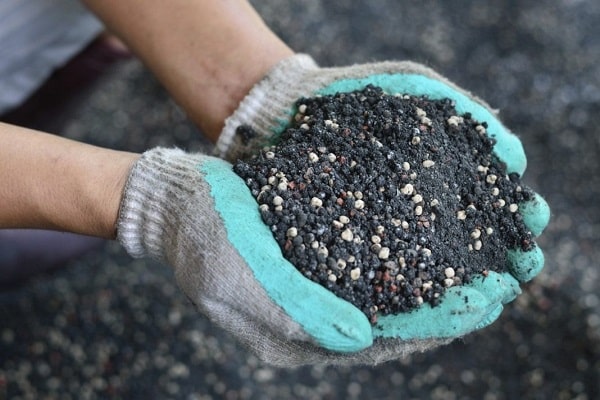
Protection against diseases and pests
Radish is most susceptible to attack by pests, the most dangerous of which are:
- Cabbage fly. It feeds on the underground organs of plants, which, in case of severe damage, leads to the death of the plant. Sign of defeat: bluish-purple leaves.
- Cruciferous fleas. Ulcerated leaves indicate their appearance. Young growth can be completely destroyed.
Common diseases of the radish: keela, phomosis, black leg, black mold, downy mildew and vascular bacteriosis. The cause of such diseases is considered to be waterlogging.

Prevention and control of pests and diseases:
- Implementation of agrotechnical techniques. Compliance with crop rotation, contributing to the improvement of the soil. Planting the radish in the same place is possible in 3-4 years.
- Neutralization of acidic soils.
- Deep autumn plowing of the site. Regular loosening of row spacings.
- Compliance with the sowing dates, taking into account the ripening period. Fertilization and other measures aimed at accelerating plant development.
- Timely weeding of weeds.
- Hand picking of eggs, larvae and young insect pests.
- Timely cleaning and digging of the site, destruction of plant residues.
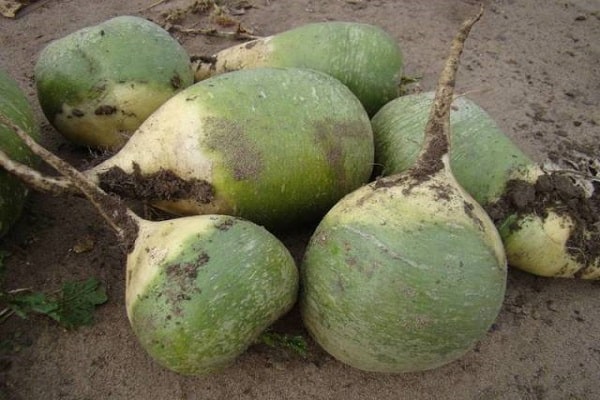
Harvesting and storage
Harvest early radish as root crops grow. The winter radish must be harvested before the frost begins. Before storage, the leaves are cut off, leaving a stem 1 cm tall. The roots are not touched. The soil from the root crops is carefully shaken off.
After drying, the radish is dipped into dry cellars and cellars with the support of the air temperature of 0–1 ⁰С and humidity not higher than 90%.
Storage of root crops is shown in untied plastic bags or boxes with two or three layers.
